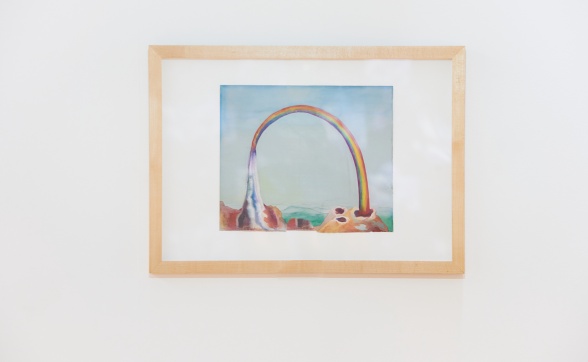Ithell Colquhoun

Ithell Colquhoun, Volcanic Landscape, 1941. Installation view at Tate Liverpool, Liverpool Biennial 2021. Photography: Rob Battersby

Ithell Colquhoun
Ithell Colquhoun, Volcanic Landscape, 1941. Installation view at Tate Liverpool, Liverpool Biennial 2021. Photography: Rob Battersby
Ithell Colquhoun (1906–1988, Assam, British India) was a British painter, occultist, poet and author, whose practice is affiliated with Surrealism. From the early stages of her artistic career through to the 1940s, Colquhoun produced several large-scale figurative paintings based on classical and biblical figures. In 1936, Colquhoun participated in the International Exhibition of Surrealism and joined the British surrealist movement in 1939, only to leave the group the following year due to her connection to occultism. She continued to develop surrealist ‘automatic’ painting techniques, which characterised her work for 25 years and resulted in two theoretical texts, The Mantic Stain (1949) and Children of the Mantic Sun (1951). Recent exhibitions include Tate St. Ives, UK (2009-2010) and Manchester Art Gallery, UK (2009).
Project Description
Three paintings by Ithell Colquhoun from Tate’s collection – Earth Process (1940), Volcanic Landscape (1941), and Three Elements (1940-2) – were presented at Tate Liverpool. Colquhoun's paintings are concerned with natural processes, systems and cyclical renewal, referencing growth and decay as well as the four essential elements of nature: earth, air, fire and water. Working in the early-to-mid twentieth century, Colquhoun's works were created in a context where a modern understanding of natural processes and science was accelerating, but where science was more receptive to other disciplines and cultural interpretations. Colquhoun's paintings can be read as parascientific – drawing on her interests in Occultism and Surrealism as alternative ways of reading and situating oneself within the world. This particular collection of paintings depicts erupting ritualistic and rhythmic sequences of plant growth, atmospheric phenomena and volcanic activity. Colquhoun's paintings were displayed alongside the work of contemporary artist Linder, who created new collages responding to Colquhoun and their shared interest in the occult.
Our full exhibition programme is now closed, but visitors can still enjoy art in person at FACT and Bluecoat until August & September. Plan your visit here.
Liverpool Biennial
55 New Bird Street
Liverpool L1 0BW
- T +44 (0)151 709 7444
- info@biennial.com
Liverpool Biennial is funded by
Founding Supporter
James Moores